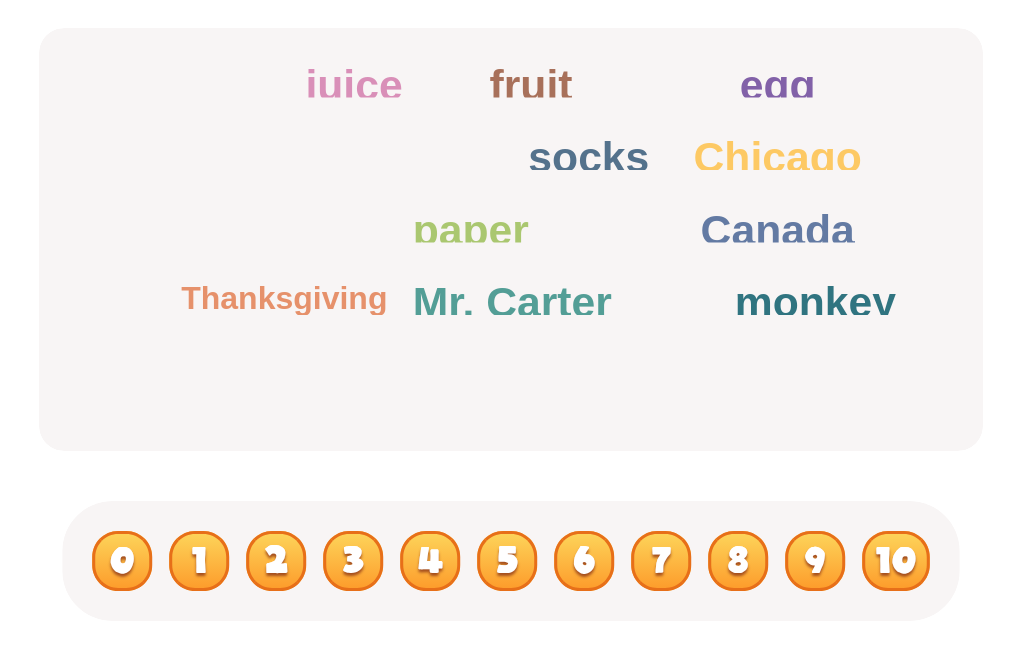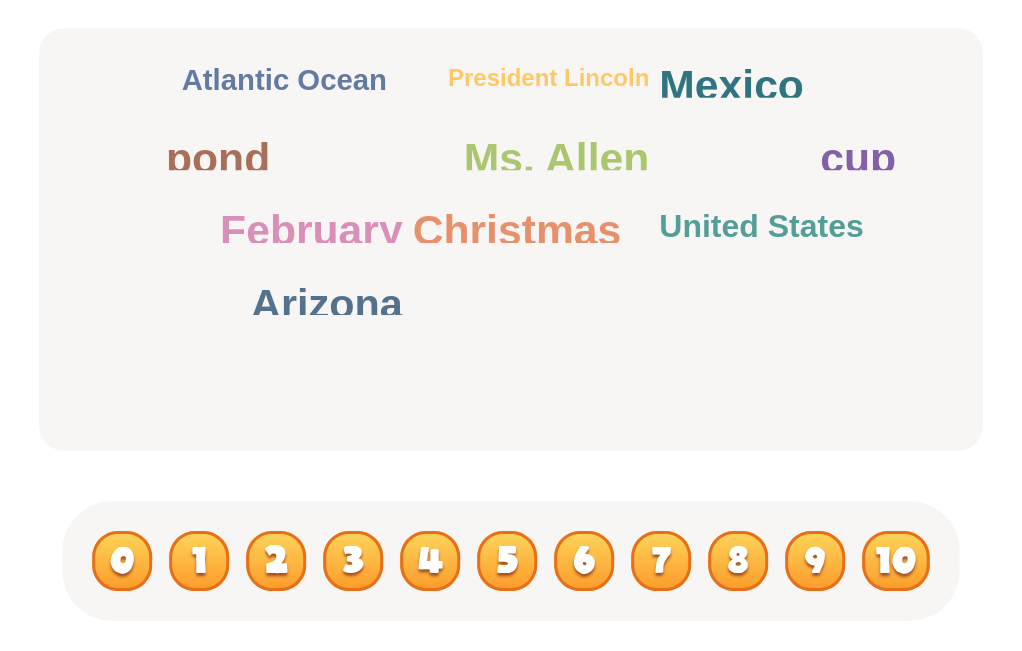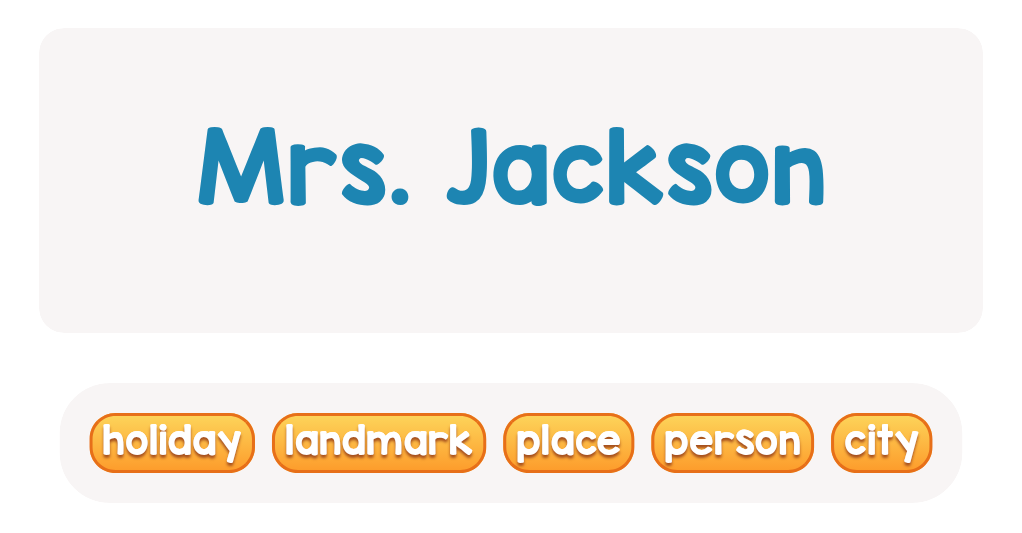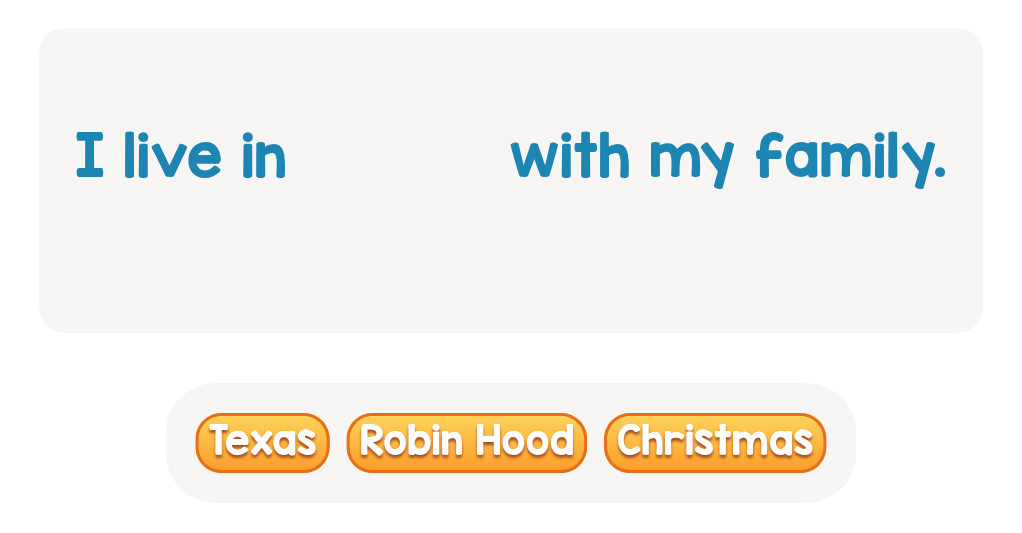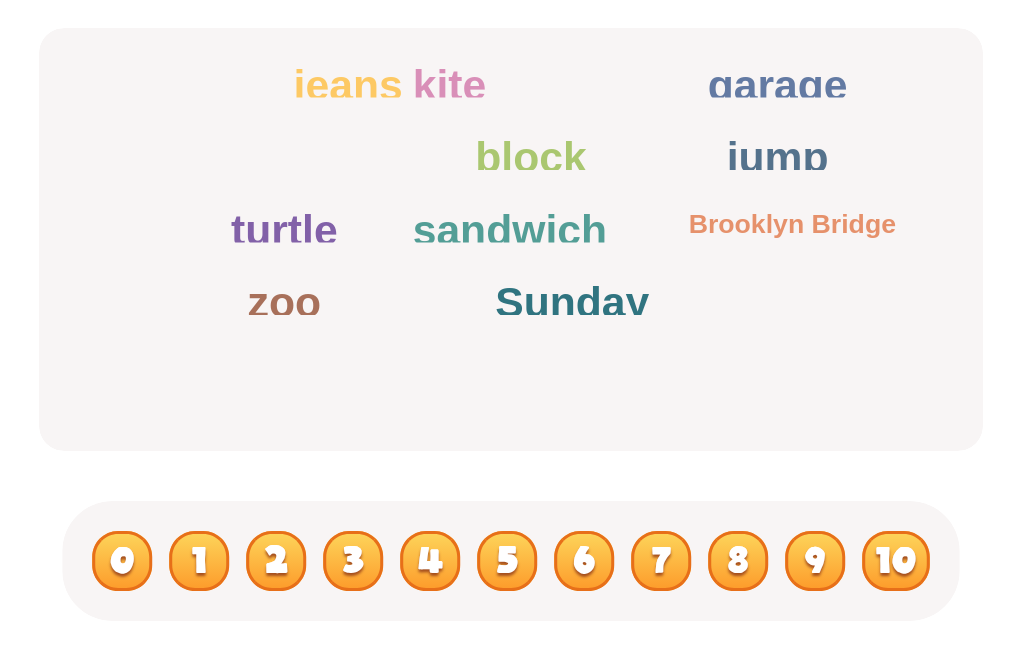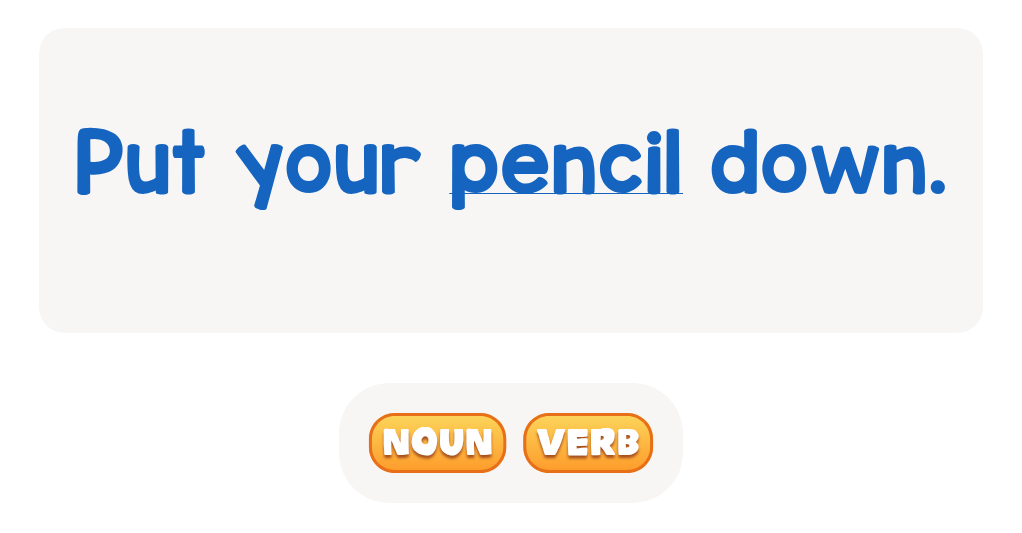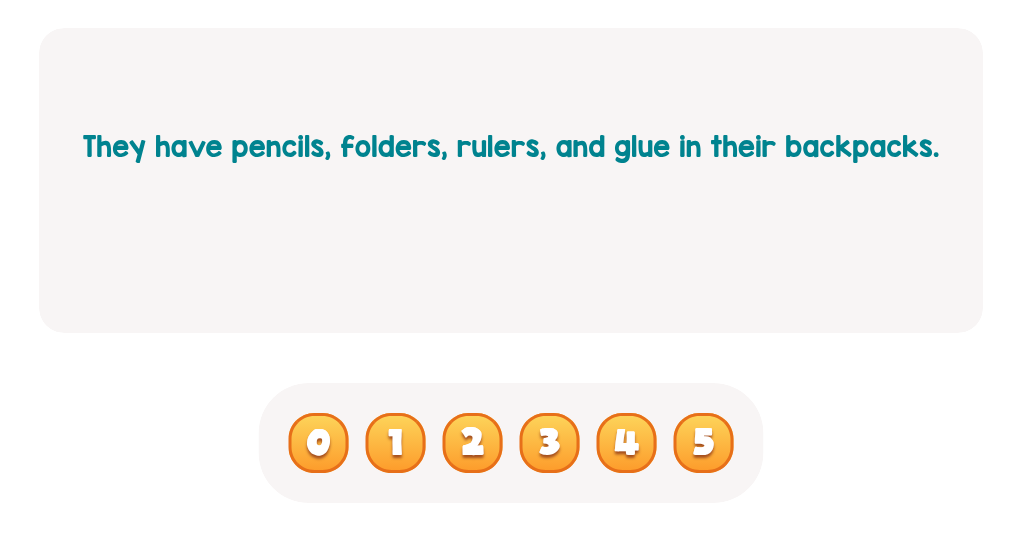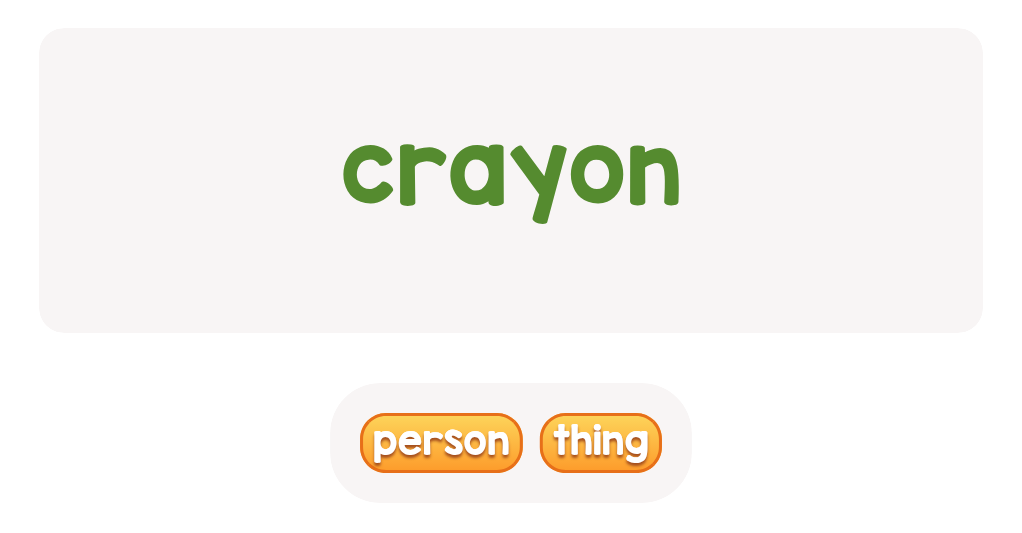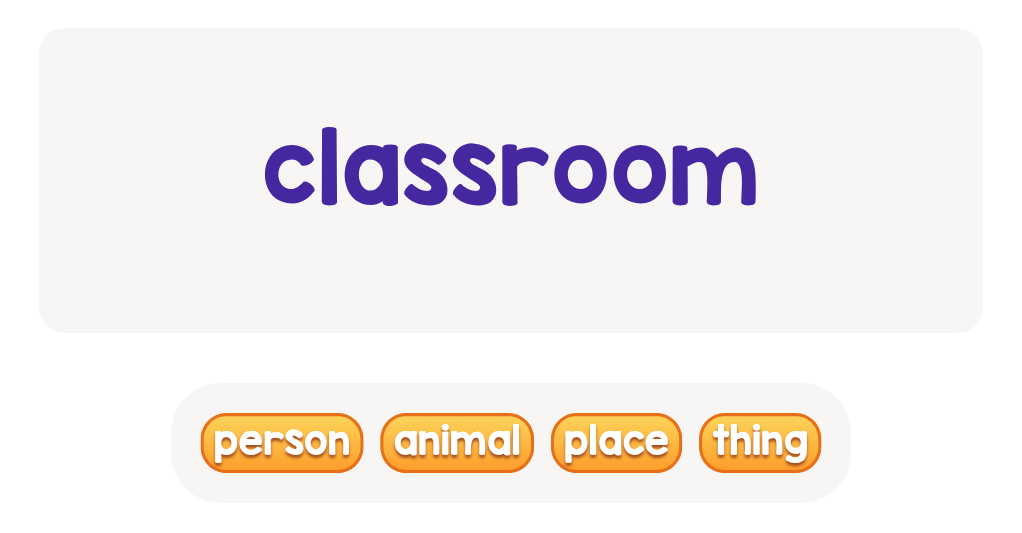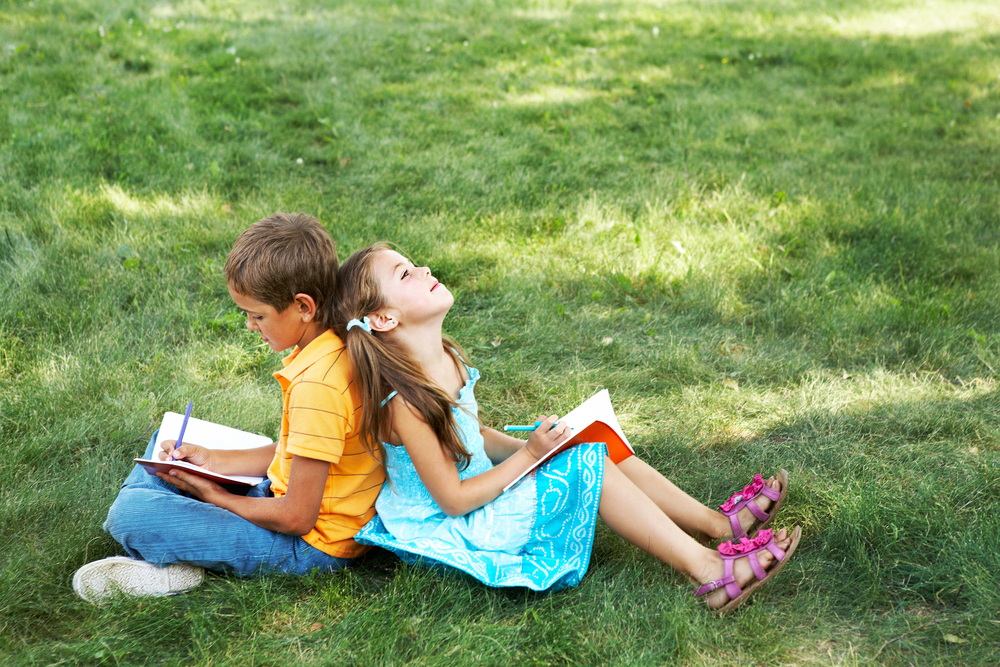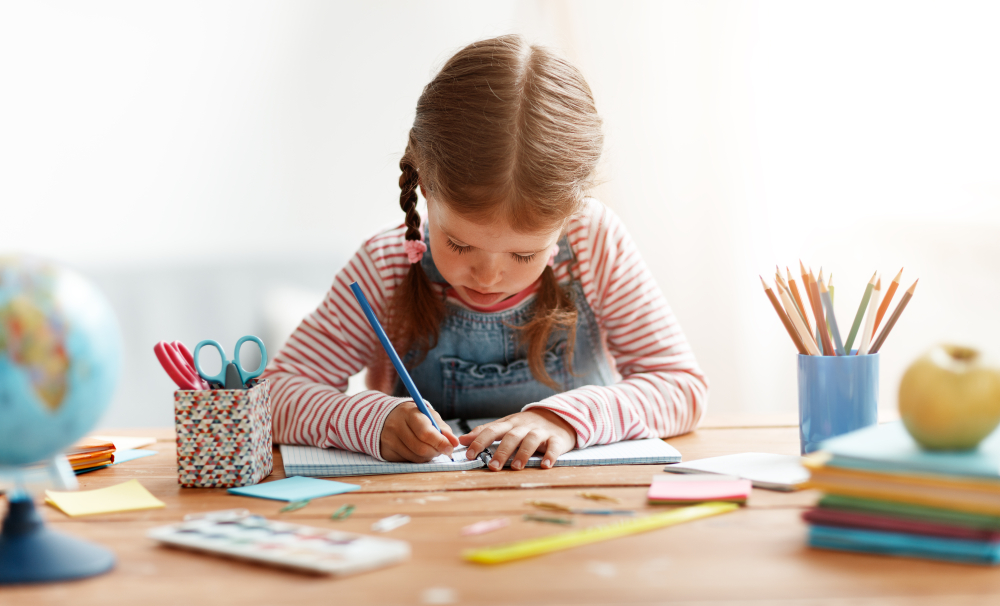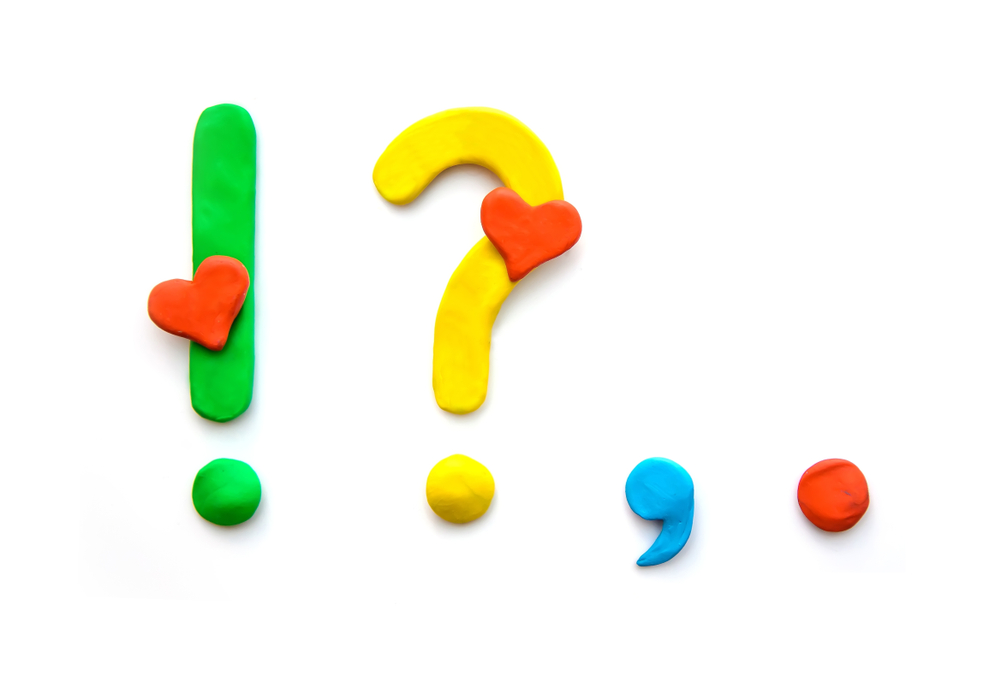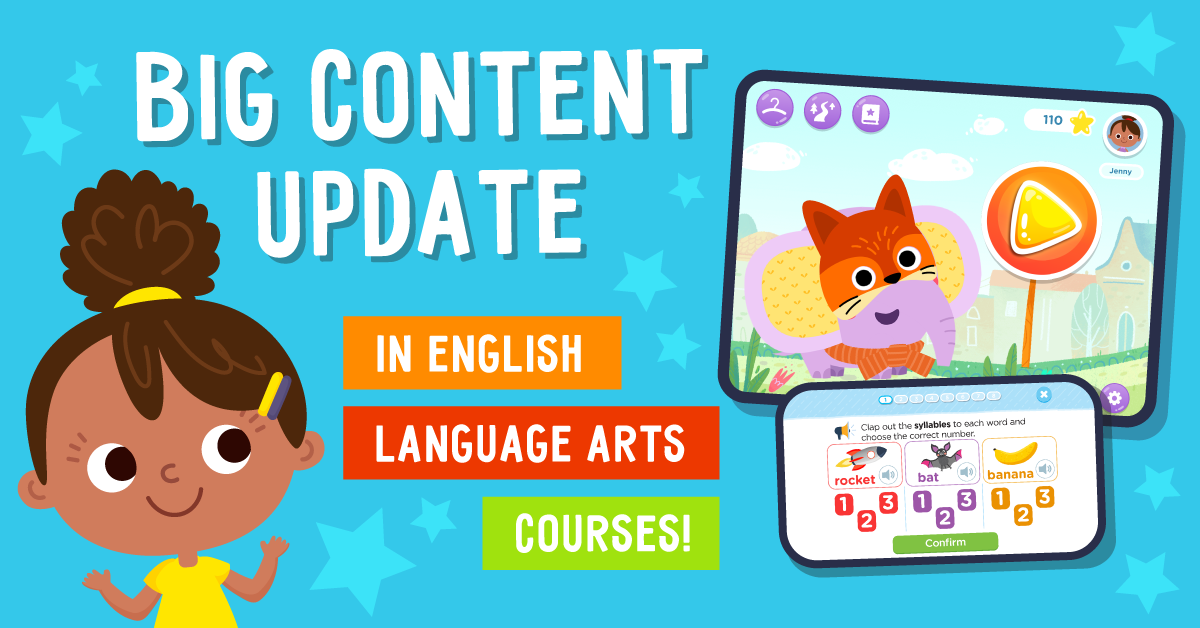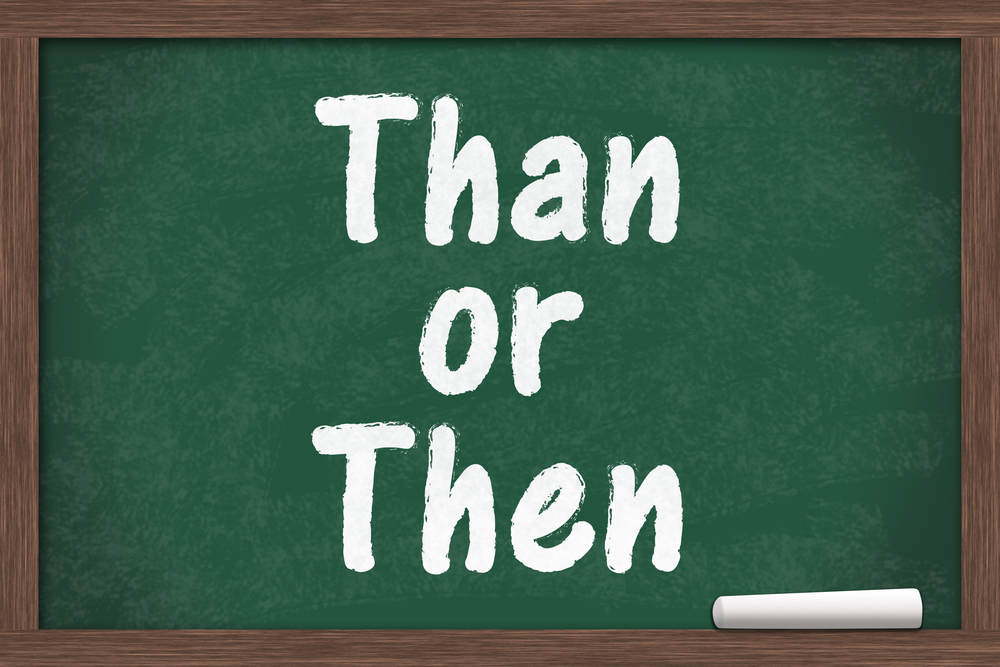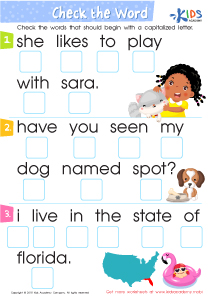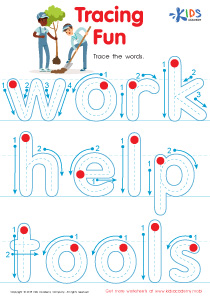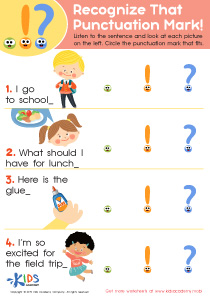Syllable identification Normal Grammar Worksheets for Ages 4-8
5 filtered results
-
From - To
Discover our Syllable Identification Normal Grammar Worksheets designed for young learners aged 4-8. These engaging and educational worksheets help children develop essential grammar skills by breaking down words into syllables. With fun activities and colorful designs, kids can practice identifying, counting, and pronouncing syllables, enhancing their reading fluency and vocabulary. Perfect for both classroom use and at-home learning, our worksheets support children's linguistic development in an enjoyable and interactive way. Unlock your child's potential by visiting Kids Academy and exploring our wide range of high-quality grammar resources today!
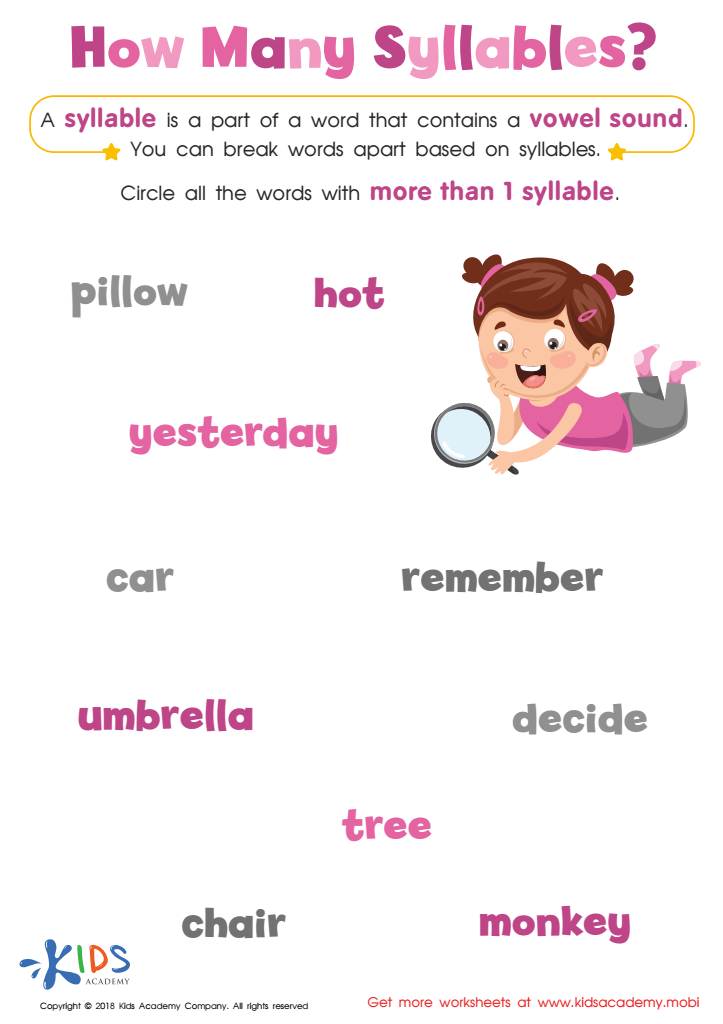

Reading: How Many Syllables Worksheet
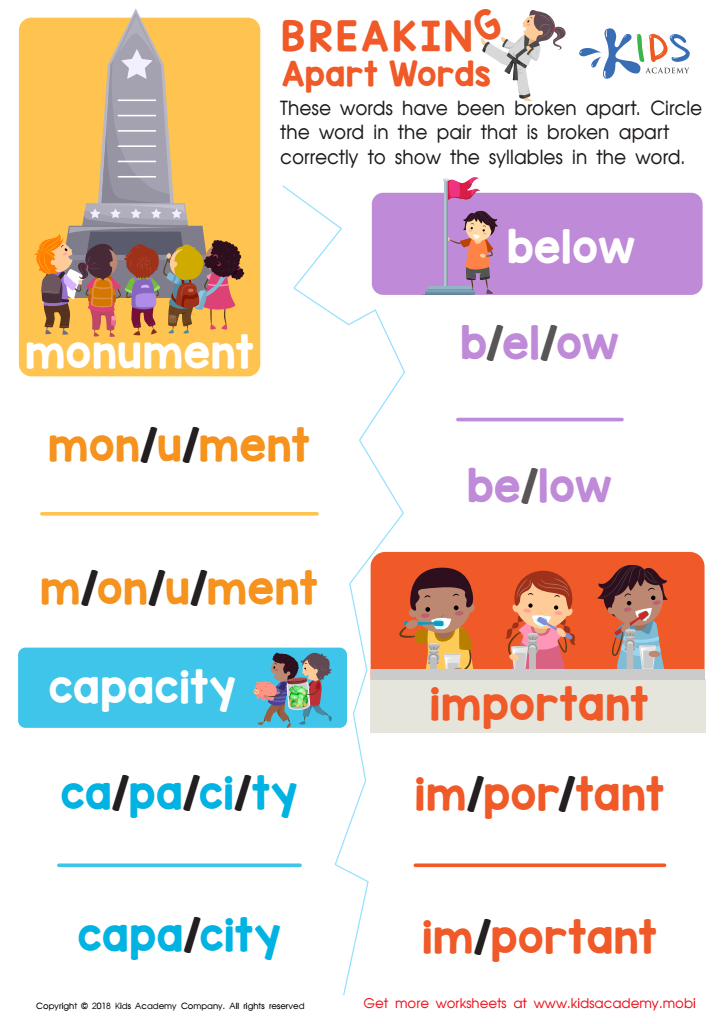

Breaking Apart Words Worksheet
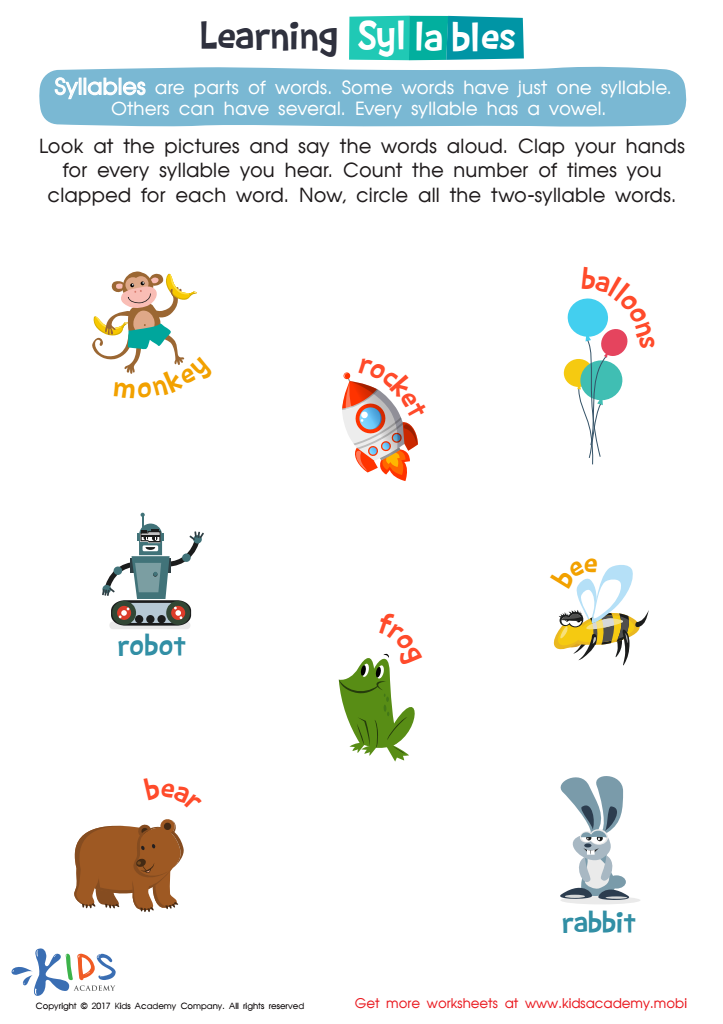

Learning Syllables Word Structure Worksheet
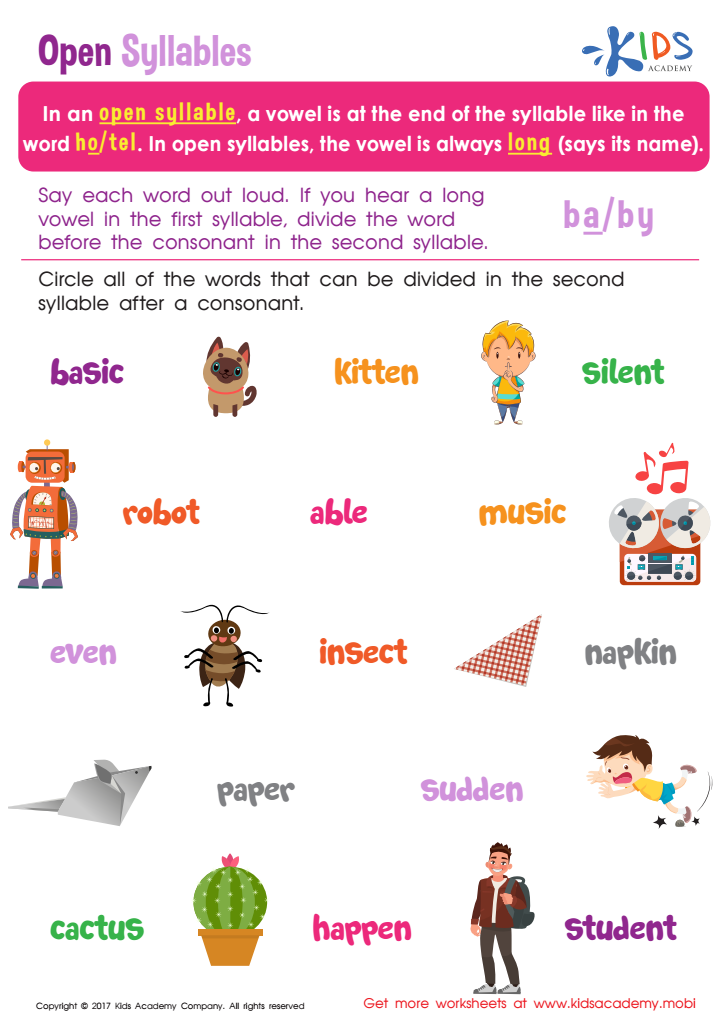

Open Syllable Printable Worksheet
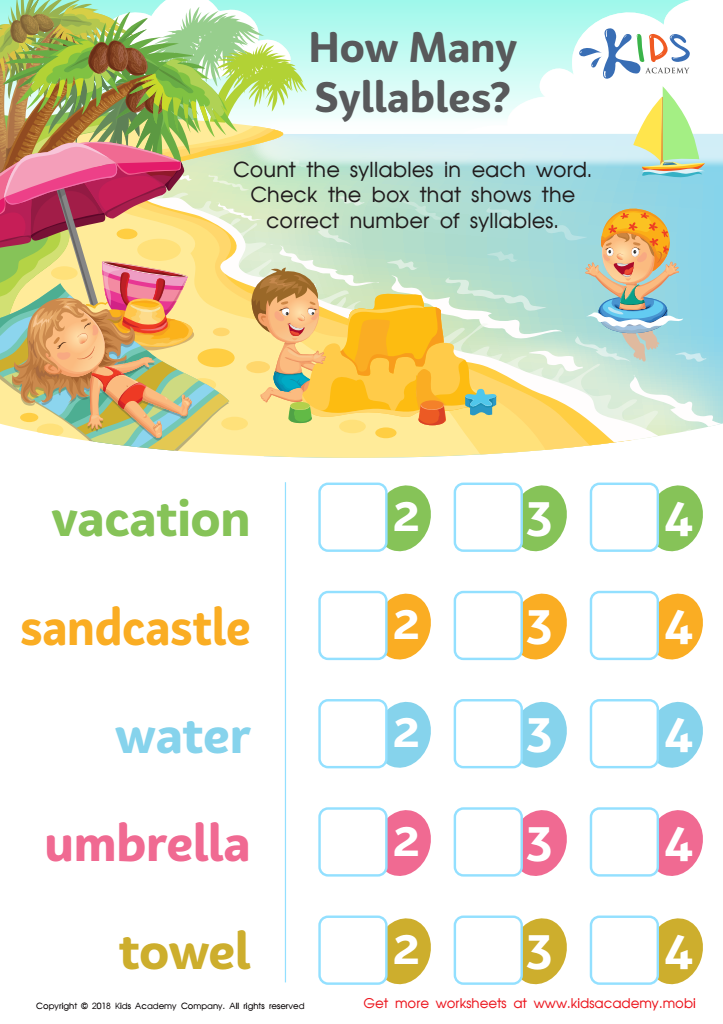

How Many Syllables Worksheet
Parents and teachers should prioritize syllable identification and normal grammar for children aged 4-8 because these foundational skills significantly contribute to literacy development. Syllable identification, the ability to recognize and segment spoken words into syllables, is essential for teaching children how to decode unfamiliar words. This skill enhances phonemic awareness, allowing children to better understand the relationship between sounds and letters, which is a critical step in learning to read.
Normal grammar, which includes the understanding and use of proper sentence structures, helps children grasp the rules of language. Mastery of basic grammar at an early age not only improves reading comprehension but also aids in clear and effective communication. When children are familiar with grammar rules, they can construct sentences properly and express their thoughts more coherently.
Moreover, early proficiency in these areas is associated with greater academic success. Children who have strong literacy skills are likely to perform better in subjects across the curriculum since reading and writing are integral to learning overall. By focusing on syllable identification and normal grammar, parents and teachers provide children with the tools they need to succeed both in school and in their wider social interactions. This investment in early literacy lays a strong foundation for future educational achievements.
 Assign to My Students
Assign to My Students
